Weeding—arguably one of the most dreaded garden chores—can be a back-breaking, time-consuming task. Whether you’re maintaining a backyard vegetable garden, flower bed, or a larger agricultural plot, controlling weeds is essential to protect your plants from competition over water, sunlight, and nutrients.
Fortunately, the right tools can transform weeding from a chore into a manageable, even enjoyable, activity. In this article, we explore six tools that make weeding much easier, detailing how they work, what they’re best used for, and tips for maximizing their effectiveness.
Let’s dig in.
1. Hori Hori Knife (Garden Knife)
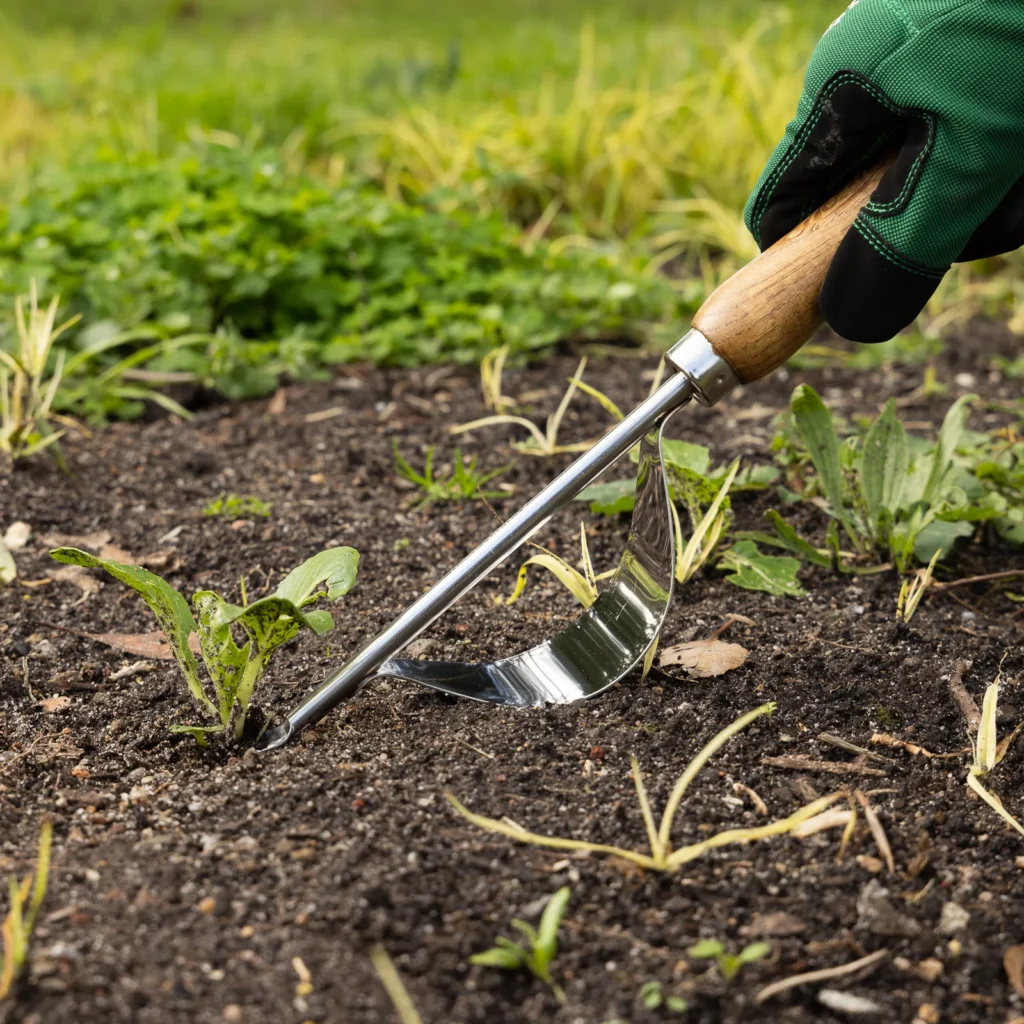
What It Is:
The Hori Hori knife, also known as a Japanese digging knife, is a multi-purpose hand tool with a sharp, curved blade on one side and a serrated edge on the other. It often features depth markings and a pointed tip for precise digging.
Why It Works:
This tool excels at precision weeding, especially for getting at tap-rooted weeds like dandelions or dock. The pointed tip allows you to dig deep without disturbing surrounding plants. The serrated edge is perfect for cutting through roots or small stems.
Best For:
- Dandelions
- Chickweed
- Small garden beds or containers
- Removing individual weeds with long roots
Pro Tip:
Keep the blade sharp for easier slicing through tough roots, and use the depth markings to ensure you reach the weed’s full root.
2. Stirrup Hoe (Scuffle Hoe)
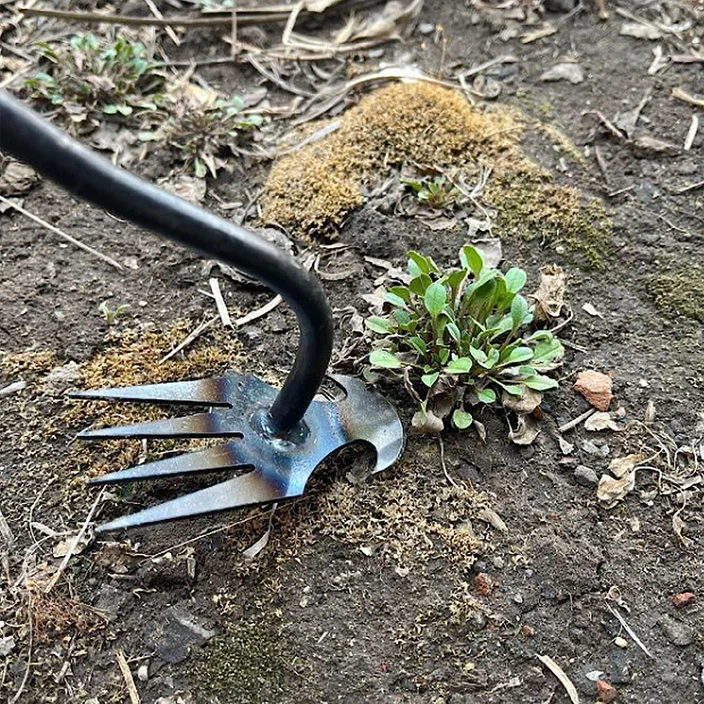
What It Is:
A stirrup hoe (named for its resemblance to a stirrup) has a looped, oscillating blade that rocks back and forth as you push and pull it just under the soil surface. It’s a standing tool with a long handle, which reduces the need for bending.
Why It Works:
This hoe is excellent for cutting weeds just below the soil surface, severing them from their roots without disrupting your garden beds. It’s incredibly efficient for covering large areas quickly, especially when weeds are small.
Best For:
- Annual weeds in vegetable rows
- Weed seedlings before they mature
- Loose or well-prepared soil
Pro Tip:
Use it on dry soil and young weeds for maximum effectiveness. Stirrup hoes work best as a preventative measure, not after weeds have deeply rooted.
3. CobraHead Weeder and Cultivator
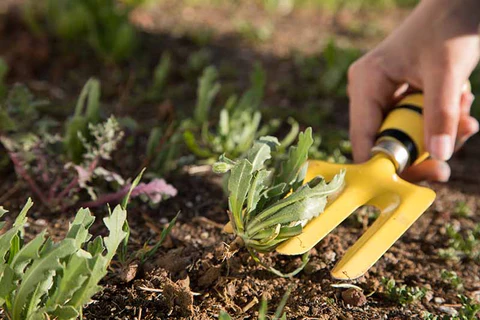
What It Is:
The CobraHead tool is a compact, hand-held cultivator with a curved, steel blade that resembles a snake’s head. It combines the digging power of a trowel with the slicing ability of a knife.
Why It Works:
Thanks to its ergonomic handle and strong curve, this tool is perfect for wiggling into tight spaces, loosening soil around roots, and extracting stubborn weeds.
Best For:
- Raised beds
- Tight corners and between closely spaced plants
- Perennial weed roots
Pro Tip:
Use a firm wrist motion to hook and pull weeds out with their roots. Great for tackling taproots and clumps in clay-heavy soil.
4. Wheel Hoe
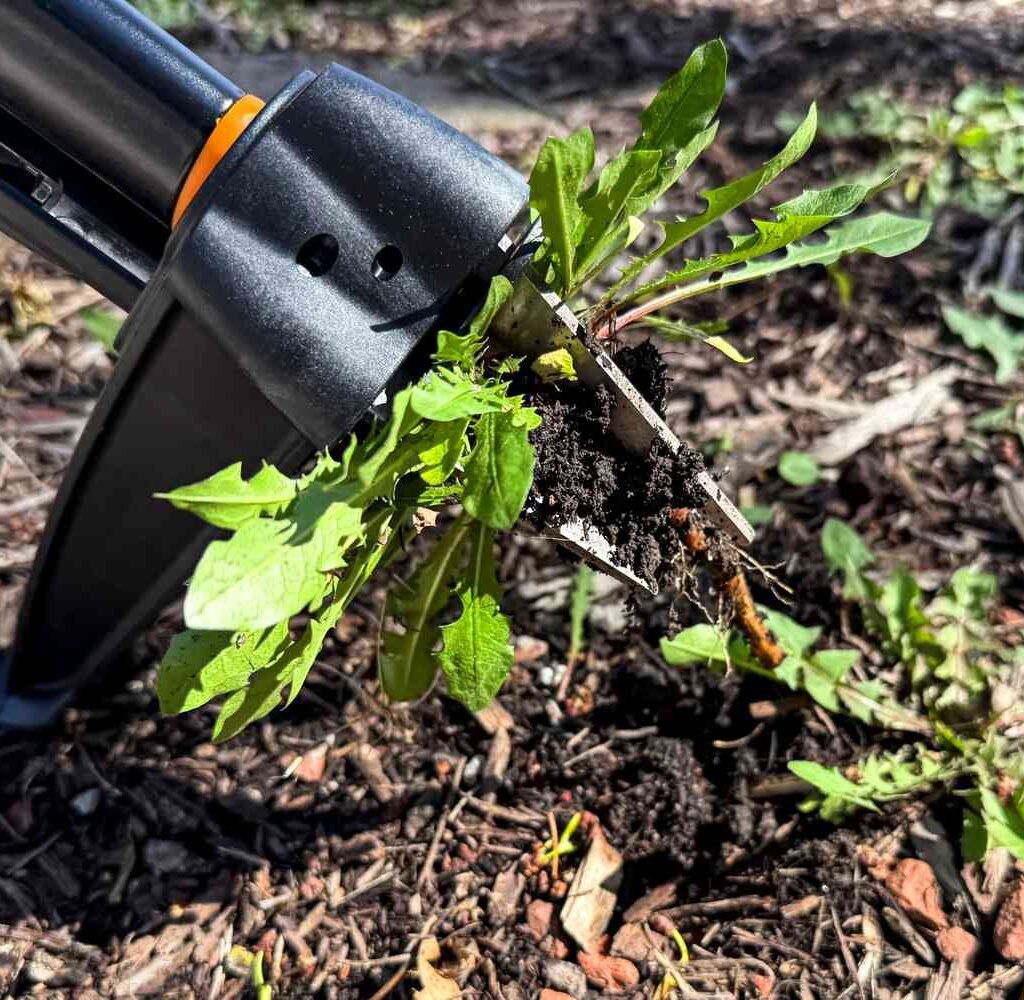
What It Is:
A wheel hoe is a push tool with one or two wheels and a set of interchangeable attachments (blades, cultivators, plows). Think of it as a walk-behind weeder and cultivator—perfect for larger garden plots.
Why It Works:
Wheel hoes let you weed entire rows in a fraction of the time it takes to use a hand tool. By rolling the hoe between rows, you can slice, uproot, and disturb weed seedlings while aerating your soil.
Best For:
- Market gardens or large home gardens
- Weed control between rows of crops
- Efficient maintenance of weed-free pathways
Pro Tip:
Use early and often—this tool is designed to maintain weed suppression, not to uproot tall or woody weeds. Keeping a regular weeding schedule maximizes its efficiency.
5. Stand-Up Weeder (Lever-Action Weeder)
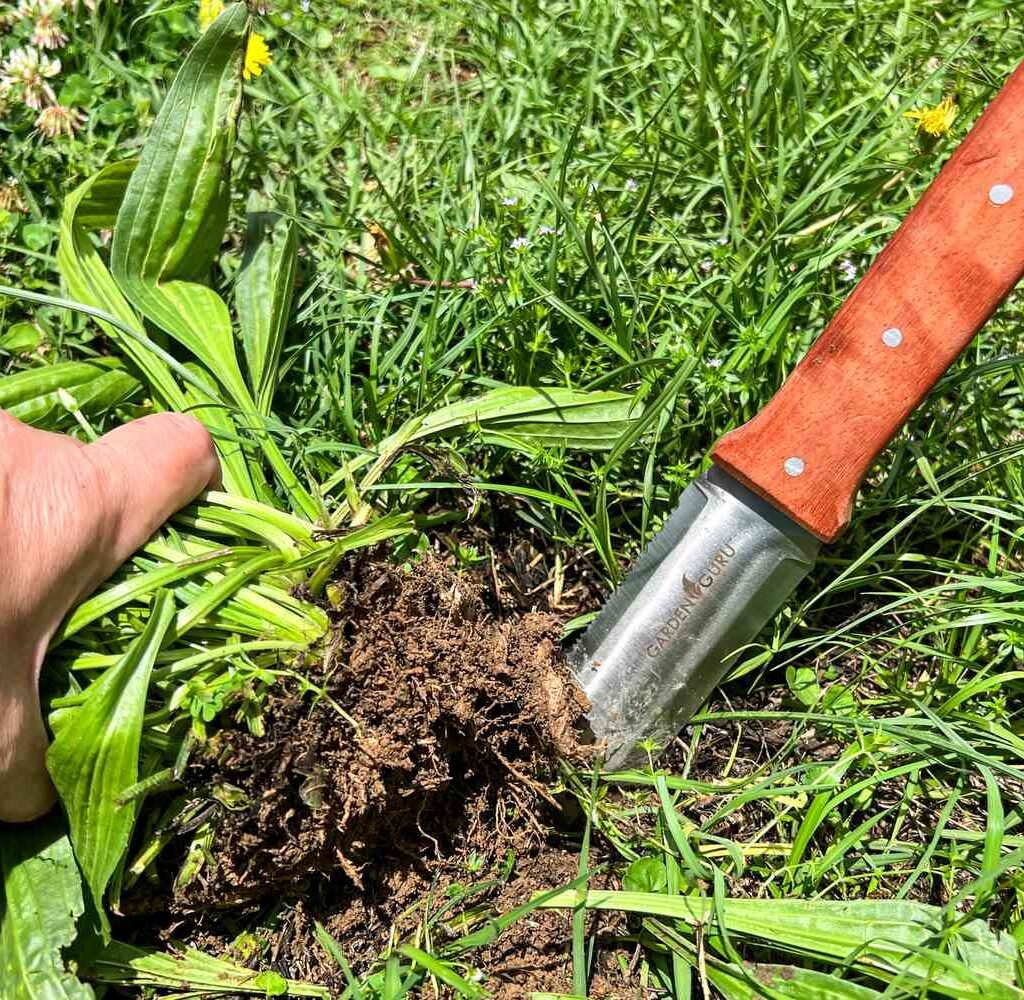
What It Is:
The stand-up weeder is a long-handled tool with a claw or spike at the end that grips the weed and pulls it out with a foot-pedal assisted leverage system. Tools like the Fiskars “Uproot” or Garden Weasel weeder are popular models.
Why It Works:
It allows you to remove weeds without bending or kneeling, which is a huge relief for gardeners with back, knee, or mobility issues. The foot pedal provides extra force to extract deep-rooted weeds cleanly and efficiently.
Best For:
- Dandelions and tap-rooted weeds in lawns
- Hard-to-reach spots
- Gardeners needing ergonomic tools
Pro Tip:
Moisten the soil before using for easier removal. Some models eject the weed with a simple press, allowing fast cleanup with minimal mess.
6. Flame Weeder (Propane Torch)
What It Is:
A flame weeder is a handheld propane-powered torch that releases a flame to briefly heat and kill weed cells. The goal is not to incinerate the weed but to rupture its cellular structure, causing it to wilt and die over the next 24–48 hours.
Why It Works:
This tool is excellent for non-selective weeding in areas like driveways, walkways, gravel paths, or between rows in a vegetable garden (before planting). It provides a chemical-free method of weed control and is surprisingly fast.
Best For:
- Driveways, gravel, patios
- Pre-emergent weed control in vegetable beds
- Organic gardeners avoiding herbicides
Safety Tip:
Never use on dry, windy days or around flammable materials. Keep a hose or fire extinguisher nearby, and always follow manufacturer safety instructions.
Choosing the Right Tool: Factors to Consider
The most effective weeding tool depends on:
- Soil type (clay, sandy, loamy)
- Garden size
- Types of weeds
- Ergonomics and physical ability
- Frequency of weeding
Matching Tool to Task:
| Task/Condition | Best Tool |
|---|---|
| Removing deep taproots | Hori Hori Knife or Stand-Up Weeder |
| Clearing large rows | Stirrup Hoe or Wheel Hoe |
| Tight spaces or raised beds | CobraHead Weeder |
| Chemical-free hardscape areas | Flame Weeder |
Bonus Accessories That Make Weeding Easier
- Garden gloves with claws – Great for hand-weeding and digging
- Garden kneeler with handles – Protects knees and aids in standing
- Bucket or garden tub – For quick cleanup and disposal of pulled weeds
- Mulch – Not a tool, but a passive weapon against future weeds
Tips for Weeding Success
- Weed early and often – It’s easier to remove weeds before they flower or go to seed.
- Target the root – Tools that remove or slice roots are more effective long-term.
- Work after rain – Moist soil is easier to weed (but avoid overly wet soil to prevent compaction).
- Keep tools clean and sharp – Sharp tools make faster work and reduce plant damage.
- Stay consistent – A little effort weekly prevents overwhelming infestations.
Conclusion: Work Smarter, Not Harder
Weeding doesn’t have to be an exhausting, never-ending battle. With the right tools, it becomes a targeted, efficient, and even satisfying part of garden care. Whether you’re tackling large agricultural rows or managing a cozy backyard plot, investing in the right weeding tools will save you time, effort, and frustration.
From the precision of a Hori Hori knife to the power of a flame weeder, each of these six tools brings its own strengths to the table. By understanding how and when to use them, you’ll be well-equipped to keep your garden healthy, weed-free, and thriving.
